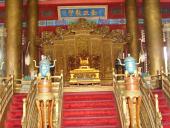What is the symbolic meaning of the Chinese dragon? The Chinese dragons (Lung) are believed to be a divine ruler of weather and water (such as waterfalls, rivers, or seas), necessary for the good of the people. It is said that some of the worst floodings were caused when a mortal had upset a dragon. In this capacity as the rulers of water and weather, the dragon is more anthropomorphic in form, often depicted as a | 
|
humanoid, dressed in a king's costume, but with a dragon head wearing a king's headdress. There are four major Dragon Kings, representing each of the four seas: the East China Sea, the South China Sea, the West Sea (sometimes seen as the Indian Ocean and beyond), and the North Sea (sometimes seen as Lake Baikal).They are seen as "in charge" of water-related weather phenomenon. In history, many temples had been built in Chinese villages to worship their local "dragon king". In times of drought or flooding, local gentry and government officials often led the community to offer sacrifices and conduct other religious rites to appease the dragon.
The dragon was also a symbol of imperial authority. Many legends draw connections between the dragon and the emperor whose wisdom and divine power assured the well-being of his subjects. Some emperors claimed to have descended from the dragon. The dragon, especially yellow or golden dragons with five claws on each foot, was a symbol for the emperor in many Chinese dynasties. The imperial throne was called the Dragon Throne. The dragon was even adopted as the national flag in the late Qing Dynasty. The dragon is featured in the carvings on the steps of imperial palaces and tombs, such as the Forbidden City in Beijing. |